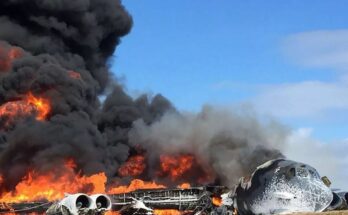
On the morning of February 4, 2015, the skies over Taipei were gray and overcast when TransAsia Airways Flight 235 took off from Songshan Airport. The flight was supposed to be a routine domestic journey from Taipei to the Kinmen Islands, operated by a twin-engine turboprop aircraft—an ATR 72-600. But just moments after takeoff, the flight turned into a tragic and shocking disaster that would claim 43 lives and make headlines around the world.
The aircraft took off at approximately 10:52 a.m. local time with 58 people on board, including 53 passengers and five crew members. Less than three minutes after liftoff, the plane began experiencing severe engine issues. According to the final accident report released by Taiwan’s Aviation Safety Council, the right engine of the ATR 72 experienced a flameout due to a malfunction. In a critical error, the flight crew mistakenly shut down the left engine—the one that was still functioning—leaving the plane without any thrust.
With both engines now effectively off, the aircraft rapidly lost altitude and entered an aerodynamic stall. Dashcam and surveillance footage captured the harrowing moments as the aircraft banked sharply left, narrowly missed buildings, and clipped a taxi on an elevated highway before plunging into the Keelung River. The final moments of the flight, with the aircraft flipping sideways and crashing belly-first into the river, were caught on video and widely shared, shocking people around the world.
Emergency responders rushed to the scene. Despite the swift rescue efforts, 43 people were confirmed dead, including both pilots and one crew member. Miraculously, 15 people survived, some rescued from the wreckage or from the cold waters of the river. Two people in the taxi struck by the plane also survived, though with injuries.
In the aftermath, investigators and the public demanded answers. How could a modern aircraft crash so quickly after takeoff? And how could trained pilots shut down the wrong engine? The answer, as detailed in the investigation report, lay in a combination of mechanical failure, human error, and inadequate training.
The investigation revealed that the initial engine failure was due to a malfunction in the fuel control unit. This alone should not have doomed the flight, as the ATR 72 is capable of flying on a single engine. However, within seconds of the failure, the captain manually shut down the left engine, apparently misidentifying which one had failed. With no engines producing power, the aircraft stalled and could not recover.

The crash had far-reaching implications. TransAsia Airways, already struggling financially, saw its reputation devastated. In 2016, the airline ceased operations entirely. Taiwan’s Civil Aeronautics Administration ordered all local airlines to review and enhance their pilot training programs, especially focusing on engine failure recognition and handling.
For the families of those who died, the pain remains deep. Many of the passengers were tourists, businesspeople, and families heading to Kinmen for personal or professional reasons. Their loss was a national tragedy and a reminder of the importance of stringent safety protocols in aviation.
The site of the crash, the Keelung River, became a place of mourning in the days and weeks that followed. Wreaths, flowers, and prayers were offered by locals and visitors alike. Though the wreckage was removed, the memory of TransAsia Flight 235 continues to haunt Taiwan and the global aviation community.


